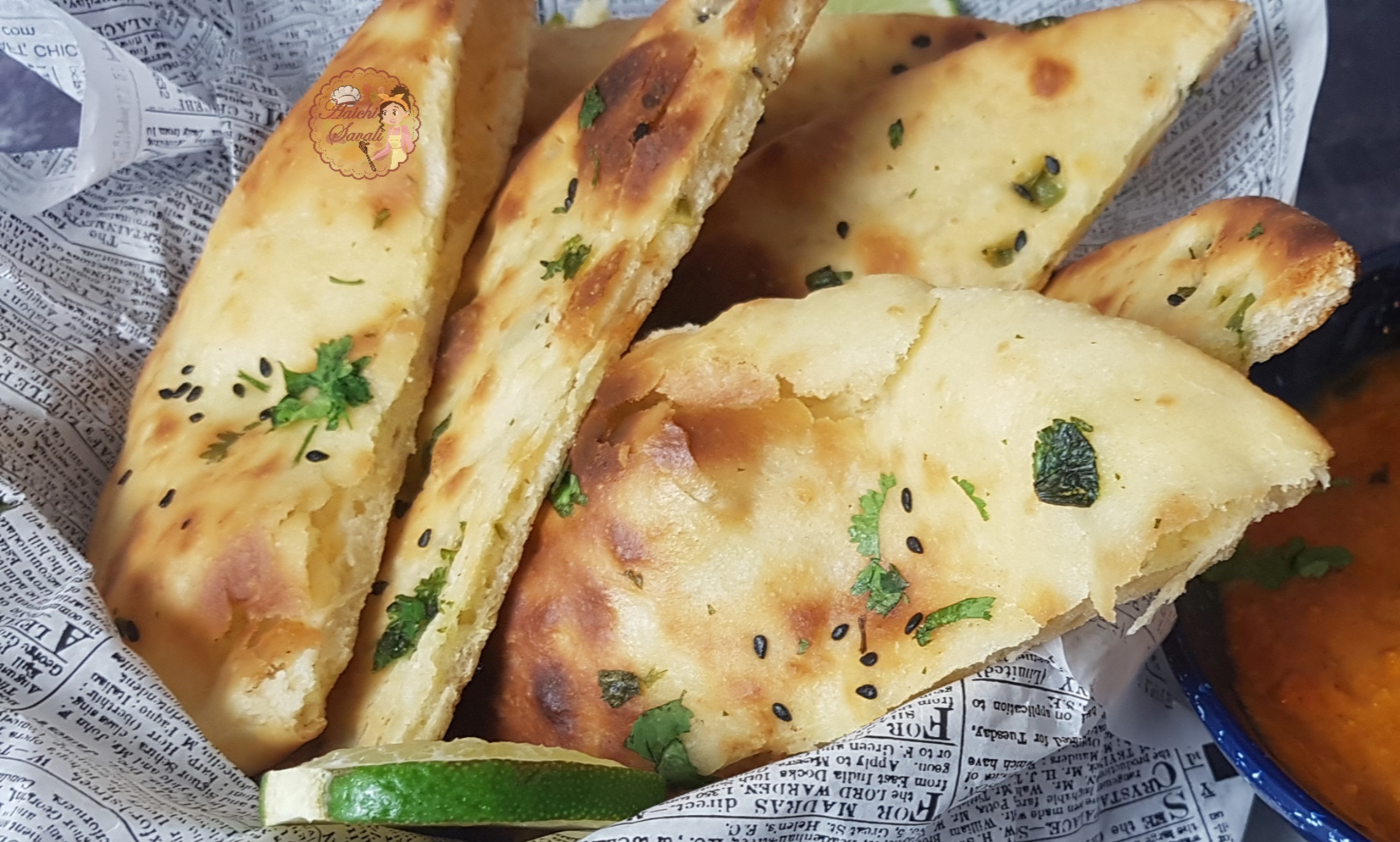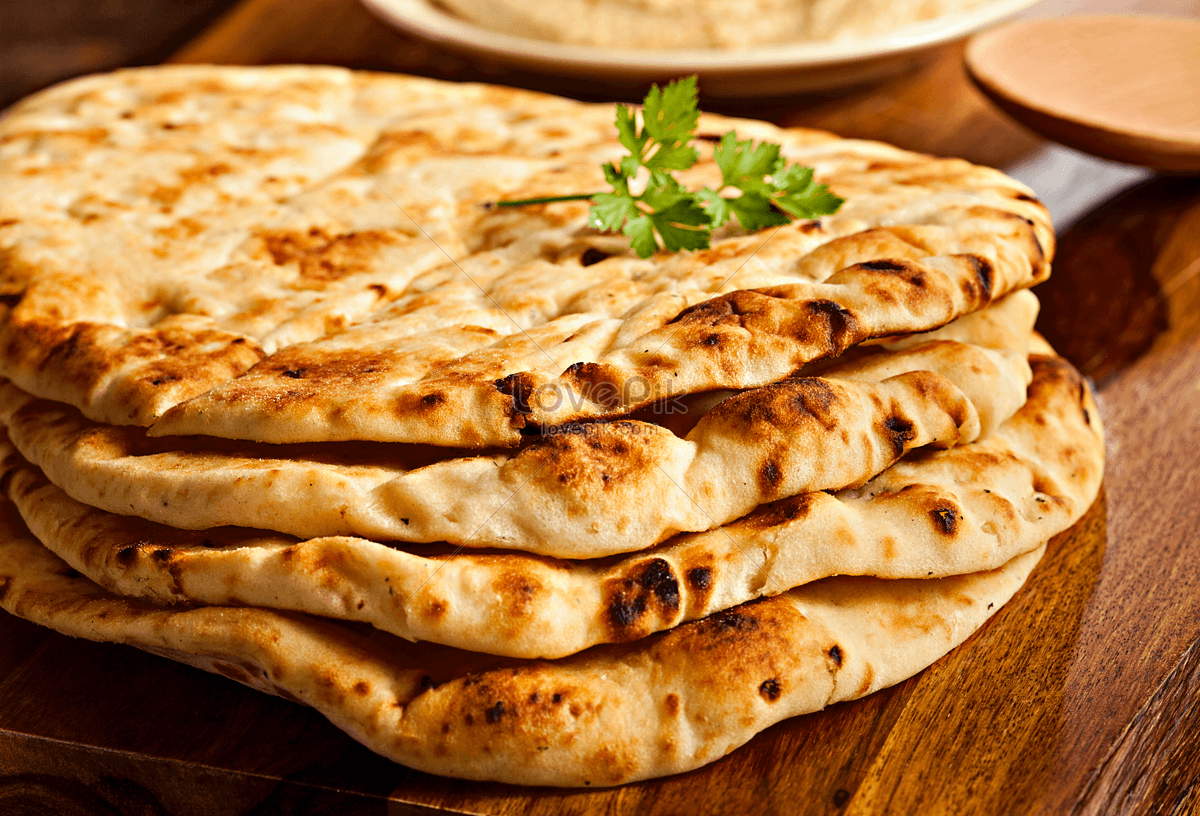Embark on a culinary adventure as we delve into the secrets of authentic Pakistani tandoori naan. This flatbread, a cornerstone of Pakistani cuisine, holds a special place in the hearts of food lovers worldwide. With its tantalizing aroma, crispy exterior, and soft, pillowy interior, tandoori naan is a culinary masterpiece that elevates any meal.
In this comprehensive guide, we will unravel the art of crafting this delectable bread. From gathering the finest ingredients to mastering the traditional cooking techniques, we will explore every step in detail. Whether you’re a seasoned baker or a novice cook, this recipe will empower you to recreate the authentic flavors of Pakistan in your own kitchen.
Ingredients
The key to making perfect Tandoori Naan lies in the use of the right ingredients and their precise proportions.
Here’s a comprehensive list of everything you’ll need:
Flour
- 3 cups (360g) all-purpose flour, plus extra for dusting
- 1 teaspoon (5g) salt
Yeast
- 1 teaspoon (5g) active dry yeast
- 1/2 cup (120ml) lukewarm water (105-115°F)
Yogurt
- 1 cup (240ml) plain yogurt
Milk
- 1/2 cup (120ml) milk, warm
Ghee
- 1/4 cup (60ml) ghee, melted
Baking Powder
- 1 teaspoon (5g) baking powder
Sugar
- 1 tablespoon (15g) sugar
Cumin Seeds
- 1 teaspoon (5g) cumin seeds
Garlic
- 1 clove garlic, minced
Ginger
- 1 teaspoon (5g) ginger-garlic paste
Green Chili
- 1 green chili, finely chopped (optional)
Coriander Leaves
- 1/4 cup (10g) fresh coriander leaves, finely chopped
Oil
- Vegetable oil, for greasing the bowl
s

Preparing the dough for tandoori naan involves several steps to ensure a soft and pliable dough that can be easily shaped and cooked.
The process begins with mixing the dry ingredients, which include flour, salt, and baking powder. These ingredients are then combined with yogurt and water to form a dough. The dough should be kneaded for several minutes until it becomes smooth and elastic.
Kneading and Resting the Dough
Kneading the dough helps to develop the gluten strands, which give the naan its characteristic chewy texture. The dough should be kneaded for at least 10 minutes, or until it becomes smooth and elastic. Once the dough has been kneaded, it should be placed in a lightly oiled bowl and covered with a damp cloth.
The dough should then be allowed to rest for at least 30 minutes, or until it has doubled in size.
Rolling Out and Shaping the Dough
Once the dough has rested, it can be rolled out into thin rounds. The rounds should be about 12 inches in diameter and 1/4 inch thick. The rounds can then be shaped into naan by pressing them into a tandoor or a hot skillet.
The naan should be cooked for a few minutes on each side, or until it is golden brown and cooked through.
Tandoor Preparation
Traditionally, naan is cooked in a tandoor, a cylindrical clay oven heated by charcoal or wood. The high heat of the tandoor creates a unique smoky flavor and a crispy, slightly charred exterior. The naan is slapped against the hot walls of the tandoor, where it cooks quickly, resulting in a chewy and flavorful bread.
Using a tandoor offers several benefits. The intense heat allows for quick cooking, resulting in a perfectly cooked naan in a matter of minutes. The enclosed space of the tandoor traps the steam and moisture, creating a soft and chewy interior.
Additionally, the smoky flavor imparted by the charcoal or wood enhances the overall taste and aroma of the naan.
Alternative Methods
If a traditional tandoor is not available, there are alternative methods to cook naan. One option is to use a gas or electric oven. Preheat the oven to the highest temperature possible and place a baking stone or pizza stone in the oven to create a hot surface.
The naan can be cooked directly on the baking stone or on a lightly greased baking sheet placed on top of the stone.
Another option is to use a cast iron skillet or griddle. Heat the skillet or griddle over medium-high heat and brush lightly with oil. Cook the naan for a few minutes on each side, or until golden brown and cooked through.
Seasoning and Variations
Tandoori naan is a versatile bread that can be seasoned and varied in many ways. Common seasonings used in Pakistani tandoori naan include garlic, ginger, coriander, cumin, and red chili powder. These spices add a flavorful and aromatic touch to the bread.
Variations on the recipe can include adding herbs such as cilantro or mint, or spices such as caraway seeds or nigella seeds. Some recipes also incorporate fillings such as cheese, vegetables, or meat. The possibilities are endless, and you can experiment with different flavors and ingredients to create your own unique tandoori naan.
Enhancing Flavor and Presentation
There are several ways to enhance the flavor and presentation of tandoori naan. One way is to brush the naan with melted butter or ghee before baking. This will give the naan a golden brown color and a rich, buttery flavor.
Another way to enhance the flavor is to sprinkle the naan with chopped cilantro or mint before serving. This will add a fresh, herbaceous flavor to the bread.
To improve the presentation, you can score the naan with a sharp knife before baking. This will create a decorative pattern on the bread and make it easier to tear apart. You can also sprinkle the naan with sesame seeds or poppy seeds before baking for an extra touch of flavor and texture.
Serving Suggestions
Tandoori naan is a versatile bread that can be served with a variety of dishes. It is traditionally paired with curries, but it can also be enjoyed with soups, salads, and even grilled meats.
When serving tandoori naan, it is important to present it in a way that maximizes its appeal. The naan should be warm and fluffy, and it should be brushed with melted butter or ghee. This will help to enhance its flavor and aroma.
Accompaniments
There are many different accompaniments that can be served with tandoori naan. Some popular choices include:
- Chutneys
- Raita
- Pickles
- Yogurt
These accompaniments can help to add flavor and variety to the meal.
Creative Uses
Tandoori naan can also be used in a variety of creative dishes. For example, it can be used to make wraps, sandwiches, and pizzas. It can also be used as a base for dips and spreads.
By using tandoori naan in different ways, you can create delicious and unique dishes that will impress your family and friends.
Final Summary

As you savor the freshly baked tandoori naan, let the symphony of flavors dance on your palate. The smoky notes from the tandoor, the aromatic spices, and the soft, chewy texture will transport you to the vibrant streets of Pakistan.
Whether enjoyed as a simple accompaniment or as a culinary canvas for your favorite dishes, this bread is sure to impress and delight.
Helpful Answers
Can I use a regular oven instead of a tandoor?
While a tandoor imparts a unique flavor, you can still achieve delicious results using a regular oven. Preheat your oven to the highest temperature possible, place a pizza stone or baking sheet on the bottom rack to retain heat, and cook the naan for a few minutes on each side until golden brown.
How do I store leftover tandoori naan?
Store leftover naan in an airtight container at room temperature for up to 2 days. To reheat, wrap the naan in foil and warm it in a preheated oven or on a skillet over medium heat until heated through.
Can I add other flavors or fillings to the naan?
Absolutely! Feel free to experiment with different seasonings, such as garlic, ginger, or cumin. You can also add fillings like cheese, vegetables, or minced meat to create unique and flavorful variations.
